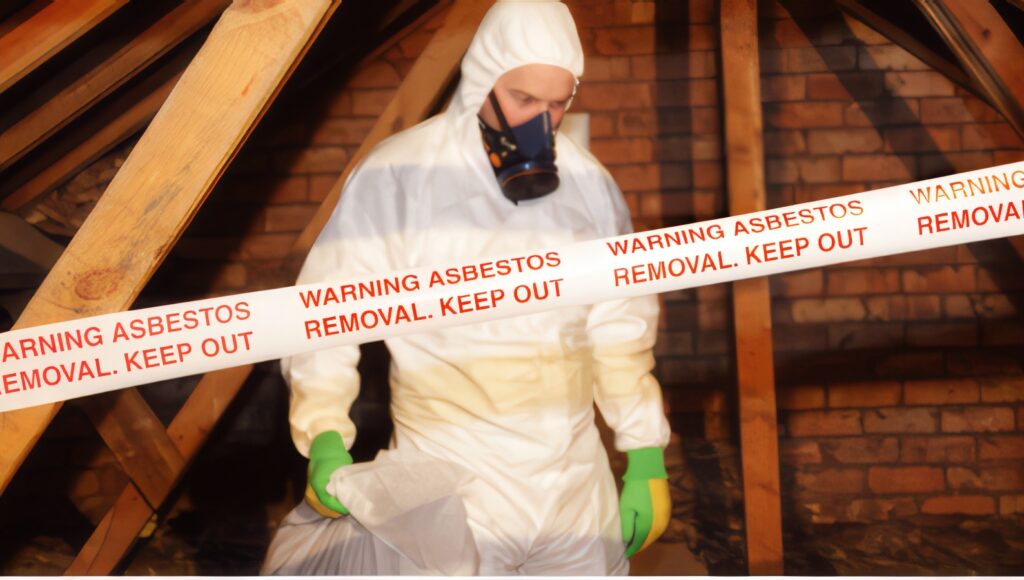NSW Chief Scientist Reports on Asbestos Management
NSW Chief Scientist Reports on Asbestos Management
NSW Chief Scientist Publishes Report on Asbestos Management

Intro
In December 2024, the NSW Chief Scientist, Dr. Hugh Durrant-Whyte, released a comprehensive report titled “Management of Asbestos in Recovered Fines and Recovered Materials for Beneficial Reuse in NSW.” This report was commissioned in response to growing concerns over asbestos contamination in recycled materials, particularly following incidents where asbestos-laden mulch was distributed across various sites in Sydney, leading to significant public health alarms.
Key Findings of the Report
-
Inconsistent Definitions and Thresholds: The report highlights that varying definitions of asbestos-related terms across different legislations have led to confusion in its management. Notably, only a few jurisdictions, both nationally and internationally, have established clear thresholds for asbestos in recyclable waste. The absence of standardized thresholds complicates the recycling process and poses challenges in ensuring safety.
-
Health Risk Assessments: The Chief Scientist points out that existing health-related evidence supporting asbestos thresholds is primarily based on predicted disease risks rather than direct correlations between asbestos concentrations in materials and actual disease incidence. This indicates a need for more empirical studies to establish concrete links between exposure levels and health outcomes.
-
Sampling and Analysis Challenges: Detecting asbestos in heterogeneous waste materials is inherently challenging. The report emphasizes that visual identification remains a primary detection method, but its effectiveness is limited by the non-uniform distribution of asbestos, often leading to “hotspots” that are difficult to identify through random sampling.
-
Risk-Based Management Approach: Currently, NSW employs a partial risk-based approach to managing asbestos in construction and demolition waste. However, this approach does not extend comprehensively to the end-use of recycled materials. The report suggests that early intervention, such as identifying and removing asbestos at the source, can more effectively prevent downstream contamination, which becomes more dispersed and harder to detect and remediate.
Recommendations
The Chief Scientist’s report offers several pivotal recommendations to enhance asbestos management in NSW:
-
Implement a Coordinated, Through-Chain Risk-Based Approach: The NSW Government should adopt a holistic strategy that addresses asbestos management at every stage of the recycling process, from demolition to the final use of recycled materials. This approach ensures that potential risks are identified and mitigated systematically throughout the value chain.
-
Establish Clear Asbestos Thresholds: It is recommended to set a threshold for asbestos content in recovered materials, specifically at 0.001% by weight. This aligns with standards from other jurisdictions, such as Western Australia’s guidelines, and provides a measurable criterion for safety assessments.
-
Develop Comprehensive Sampling and Analysis Guidelines: The NSW Environment Protection Authority (EPA) should formulate detailed protocols for the inspection, sampling, and analysis of asbestos in recycled materials. These guidelines should be developed in collaboration with industry stakeholders to ensure practicality and effectiveness.
-
Revise Construction Waste Management Standards: Updating existing standards to incorporate a thorough risk-based approach will enhance the effectiveness of asbestos management in construction and demolition waste recycling facilities. This includes adopting best practices from other regions and tailoring them to NSW’s specific context.
-
Pilot Testing of Proposed Approaches: Before full-scale implementation, conducting pilot programs will help test and validate the recommended strategies, ensuring they are both effective and feasible in real-world scenarios.
-
Promote National Consistency: Engaging with other Australian jurisdictions to harmonize asbestos management practices will facilitate a more unified and effective national approach, reducing confusion and improving safety standards across the board.
-
Enhance Source Separation Practices: Encouraging better identification and removal of asbestos at demolition sites, including residential areas, will prevent contamination at the source. This involves providing clear guidelines, training, and competency development for workers handling asbestos.
-
Support Technological Innovations: Investing in emerging technologies that aid in asbestos detection can significantly improve management practices. The government should consider supporting the development and trial of such technologies through dedicated research programs.
-
Develop Competency-Based Training Programs: Establishing standardized training for professionals involved in asbestos management, including laboratory analysts and environmental auditors, will ensure a competent workforce capable of effectively managing asbestos-related risks.
Context and Implications
The release of this report comes in the wake of the Sydney asbestos crisis, which began in early 2024 when asbestos-contaminated mulch was discovered in multiple public spaces, including parks, schools, and residential areas. This incident led to widespread public concern and highlighted significant gaps in the existing asbestos management framework.
The Chief Scientist’s recommendations aim to address these gaps by proposing a more nuanced and practical approach to asbestos management. By setting realistic thresholds and emphasizing a risk-based strategy, the report seeks to balance public health concerns with the practicalities of waste management and recycling.
However, these recommendations have sparked debate among stakeholders. While some industry experts advocate for the proposed changes, citing improved sustainability and resource efficiency, others, including health advocacy groups, express concerns about any permissible levels of asbestos in recycled materials, emphasizing the potential long-term health risks.
As of February 2025, the NSW Government is reviewing the report’s findings and engaging with various stakeholders to formulate a comprehensive response. The outcome of this deliberation will significantly influence the future of asbestos management policies in the state, aiming to enhance public safety while promoting effective resource recovery practices.


